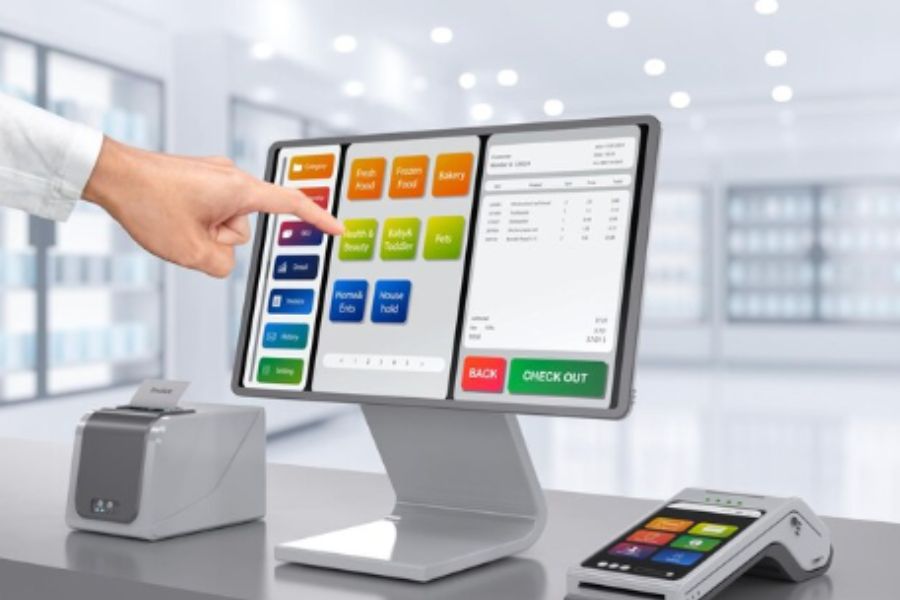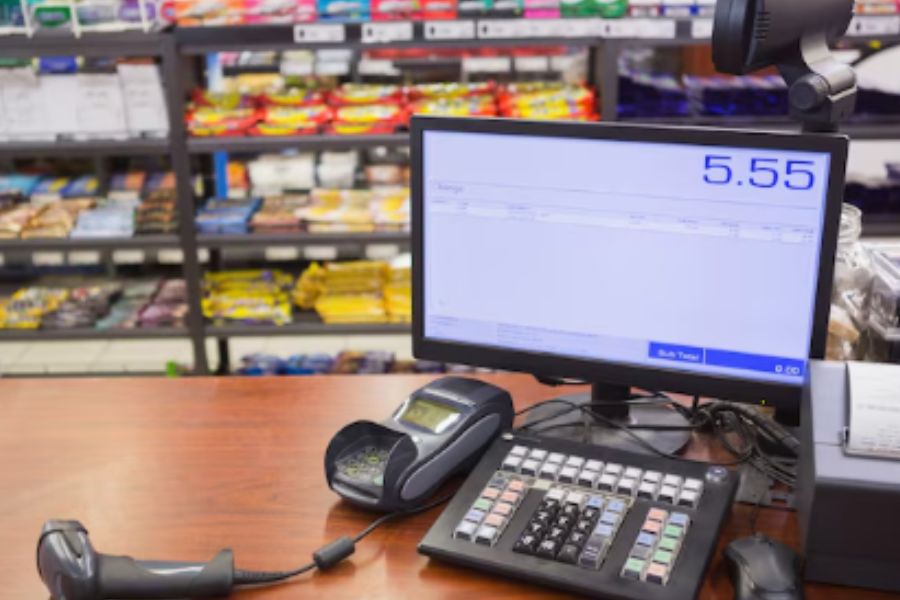Are you harnessing the complete potential of your POS system’s analytics? Using data insights is crucial to maintaining a competitive edge for businesses in the competitive market. However, how can you be sure that you are fully maximizing your POS analytics to drive growth and efficiency? In this blog post, we will delve into how to optimize your POS system analytics to make better decisions, boost sales, and streamline operations.
What is POS System Analytics?
POS system analytics or point-of-sale system analytics refers to the process of collecting, analyzing, and interpreting data generated by a point-of-sale system in order to gain insights into various aspects of business operations. This includes sales trends, customer behavior, inventory management, and overall business performance.
POS analytics involves the use of specialized software and tools to gather data from transactions processed through the POS system. This data typically includes information such as sales volumes, popular products, customer demographics, time of purchase, and more.
By analyzing this data, businesses can make informed decisions to optimize their operations and improve profitability. For example, they can identify best-selling products and adjust inventory levels accordingly, target marketing efforts towards specific customer segments, optimize pricing strategies, and enhance the overall customer experience.
Overall, POS system analytics enables businesses to better understand their sales and customer dynamics, leading to more effective decision-making and ultimately improved business performance.
8 Tips To Make The Most Out Of Your POS System Analytics
Leveraging the power of POS system analytics strategically can provide invaluable insights to drive growth and success. By leveraging the data generated by their POS system, businesses can gain a deeper understanding of their operations, customers, and market trends.
To maximize the benefits of POS system analytics, here are 8 essential tips that can help you make informed decisions, enhance customer satisfaction, and optimize your overall business performance.
Categorize Your Customer Base into Segments
A primary way to expand your store using POS analytics is to segment your customer base by analyzing point-of-sale data such as purchasing behavior, trends, and customer demographics.
Group your customers into categories, which allows you to tailor marketing campaigns, promotions, and communication for each segment. This focused approach enables you to send personalized messages and incentives that resonate with your customers, ultimately increasing their engagement and leading to higher sales.
Whether you’re creating exclusive promotions for your top-spending customers or recommending products based on the preferences of frequent buyers, using POS analytics to segment your customer base helps cultivate stronger connections and enhances customer satisfaction.
Enhance Your Loyalty Program
A well-designed loyalty program can be a powerful tool for increasing customer retention and driving repeat business. POS system analytics can provide valuable insights into customer behavior, allowing you to optimize your loyalty program for maximum effectiveness.
Analyzing purchase patterns and customer preferences can help you tailor your loyalty rewards to better meet your customers’ needs and desires. For example, you can offer personalized rewards based on each customer’s purchasing history or incentivize specific behaviors, such as referring friends or making repeat purchases.
Furthermore, POS system analytics features like the ones of ConnectPOS can help you track the performance of your loyalty program in real-time, allowing you to make adjustments and improvements as needed.
Uncover Opportunities for Upselling and Cross-Selling
One key benefit of POS system analytics is its ability to uncover opportunities for upselling and cross-selling. By analyzing purchase data and customer behavior, you can identify products that are frequently purchased together or complementary to one another.
Armed with this information, you can train your staff to suggest additional products to customers at the point of sale, increasing the value of each transaction. You can also use targeted marketing campaigns to promote related products to customers based on their past purchases or browsing history.
In addition to increasing sales revenue, upselling and cross-selling can also enhance the overall customer experience by helping customers discover new products that meet their needs or preferences.
Fine-Tune Inventory Management and Pricing Strategies
Effective inventory management and pricing strategies are essential for maximizing profitability and minimizing waste. POS system analytics can provide valuable insights into sales trends, product performance, and inventory levels, allowing you to fine-tune your strategies for optimal results.
By analyzing sales data, you can identify which products are selling well and which are underperforming, allowing you to adjust your inventory levels accordingly. This can help you avoid stockouts of popular items and minimize excess inventory of slow-moving products, reducing carrying costs and maximizing inventory turnover.
Additionally, POS systems like ConnectPOS provide analytics features that can help you identify pricing trends and customer sensitivities, allowing you to set prices that are competitive yet profitable.
Improve Employee Performance
Employee performance plays a critical role in delivering a positive customer experience and driving sales. POS system analytics can provide valuable insights into employee performance metrics, allowing you to identify top performers, areas for improvement, and opportunities for training and development.
By tracking key performance indicators such as sales volume, transaction times, and customer satisfaction ratings, you can identify which employees are excelling and which may need additional support or training. This allows you to provide targeted coaching and feedback to help employees improve their performance and achieve their full potential.
For example, you can use sales data to establish performance targets and reward employees who meet or exceed them. This can help drive employee engagement and morale, leading to improved performance and customer satisfaction.
Spot Emerging Trends
In the ever-changing business environment, staying ahead of emerging trends is essential for maintaining a competitive edge. POS system analytics can provide valuable insights into market trends, customer preferences, and competitor strategies, allowing you to spot emerging trends early and capitalize on them.
By analyzing sales data and customer feedback, you can identify shifts in consumer behavior, preferences, and purchasing patterns. This allows you to adjust your product offerings, marketing strategies, and business operations to better align with evolving customer needs and preferences.
Furthermore, POS system analytics can help you monitor competitor activity and market trends, allowing you to identify opportunities and threats in the marketplace.
Streamline Operations
Efficient operations are essential for maximizing productivity, minimizing costs, and delivering a positive customer experience. POS system analytics can provide valuable insights into your business operations, allowing you to identify inefficiencies, streamline processes, and optimize performance.
By analyzing transaction data, you can identify bottlenecks and inefficiencies in your workflow, allowing you to make targeted improvements to streamline operations. This may involve redesigning workflows, reallocating resources, or implementing new technologies to automate manual tasks.
Additionally, POS system analytics can help you optimize inventory management and supply chain operations, ensuring that you have the right products in stock at the right time.
Integrate Online Sales Seamlessly with In-House Processes
Integrating online sales with in-house processes is essential for delivering a seamless and consistent customer experience. POS system analytics can help you streamline the integration of online and offline sales channels, allowing you to better serve your customers and optimize your operations.
Integrating a POS system (such as ConnectPOS) with your e-commerce platform allows you to gain real-time visibility into inventory levels, sales data, and customer information across all channels. This allows you to offer services such as buy online, pick up in-store (BOPIS), or ship from store, providing customers with greater flexibility and convenience.
Besides that, POS system analytics can help you track the performance of your online sales channels, allowing you to identify opportunities for improvement and optimization.
FAQs: POS System Analytics
- What types of data can be analyzed using POS system analytics?
POS system analytics can analyze various types of data generated during transactions, including sales volumes, product performance, customer demographics, purchasing behavior, inventory levels, pricing trends, employee performance metrics, and more.
This data provides valuable insights into business operations, customer preferences, and market trends, enabling businesses to make informed decisions and optimize their strategies.
- What is POS data analytics?
POS data analytics refers to the process of collecting, analyzing, and interpreting data generated by a point-of-sale (POS) system to gain insights into business operations and customer behavior. It involves using specialized software and tools to extract meaningful information from transactional data, such as sales trends, customer preferences, and inventory levels.
- How will a POS system enhance the operations?
A POS system can enhance operations in several ways. Firstly, it streamlines the checkout process by automating transactions, reducing wait times, and improving customer service. Secondly, it provides real-time visibility into sales data, inventory levels, and employee performance, enabling businesses to make informed decisions and optimize their operations.
Additionally, a POS system can facilitate tasks such as inventory management, order processing, and customer relationship management, helping businesses operate more efficiently and effectively.
Wrap Up
In conclusion, leveraging POS system analytics can be a game-changer for businesses looking to maximize their efficiency, drive sales, and enhance customer satisfaction. By following the eight tips outlined above, businesses can unlock the full potential of their POS data and gain valuable insights into their operations, customers, and market trends.
To explore more about ConnectPOS’s analytics feature, contact us!



